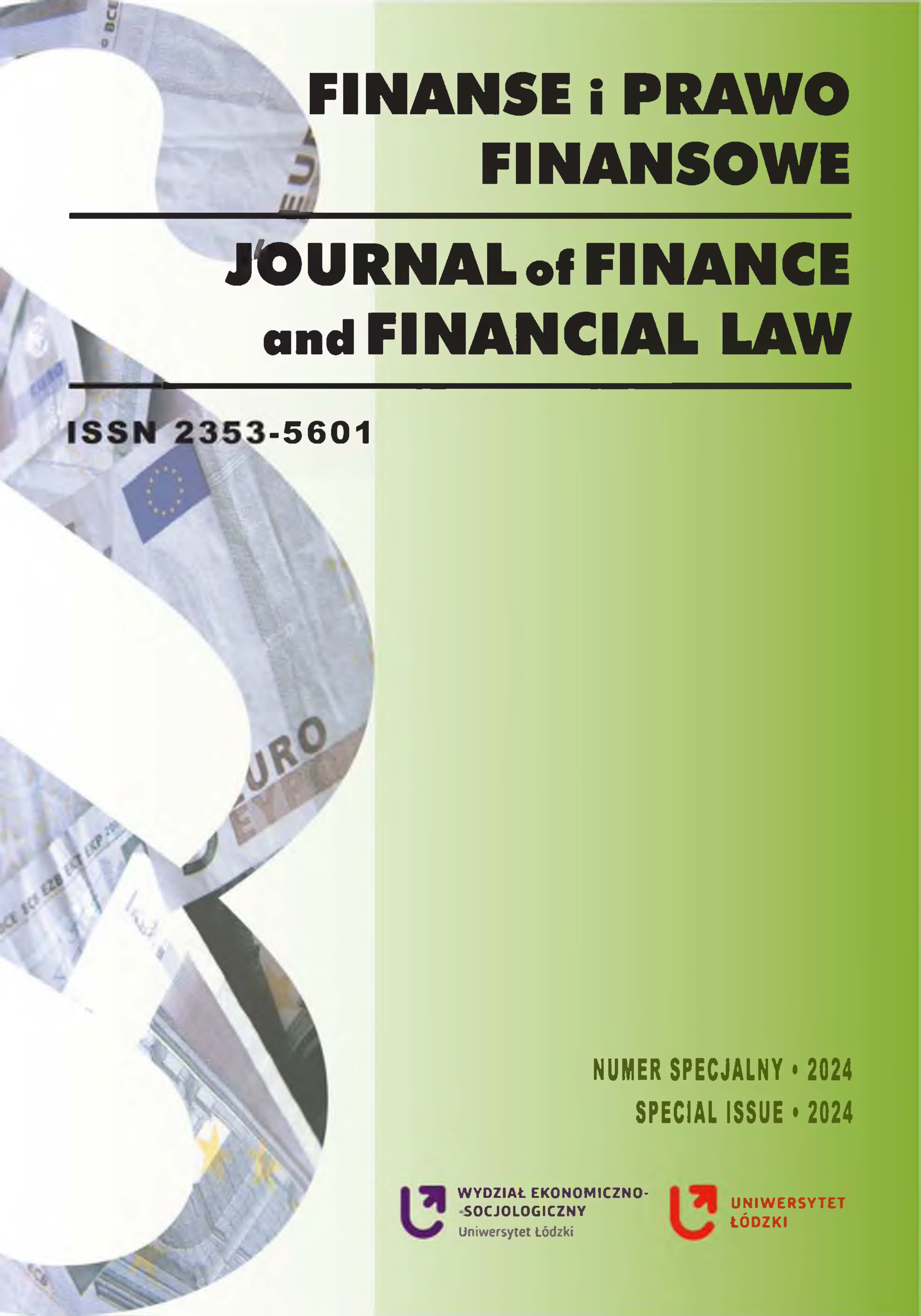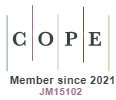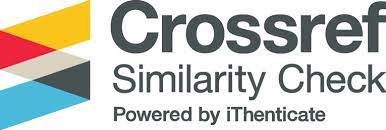Empirical Study of Multi-Objective Risk Portfolio Optimization Based on NSGA-II
DOI:
https://doi.org/10.18778/2391-6478.S1.2024.04Keywords:
portfolio optimization, risk measure, multi-objective, NSGA-II, empirical studyAbstract
The purpose of the article. The application of multi-objective optimization in portfolio management has gained significant attention in asset management. This study aims to uncover the potential advantages of dynamic portfolio optimization using a multi-objective genetic algorithm to address the challenges of ever-changing market conditions.
Methodology. By incorporating multi-objective optimization, this paper comprehensively examines three key portfolio objectives: minimizing two risk types and maximizing returns. The approach involves constructing portfolios, initializing the population using the Non-Dominated Sorting Genetic Algorithm II (NSGA-II), and employing crossover and mutation steps to achieve Pareto optimality. Additionally, this study compares the performance of two risk minimization strategies through traditional portfolio backtesting.
Results of the research. The results indicate that the multi-objective risk genetic algorithm not only effectively explores the portfolio space but also handles conflicting optimization objectives, thereby enhancing the comprehensiveness and flexibility of investment decisions. However, its performance depended on the chosen risk measurement methods, and the backtesting returns were unstable.
Downloads
References
Almahdi, S. and Yang, S. Y. (2017). An adaptive portfolio trading system: A risk-return portfolio optimization using recurrent reinforcement learning with expected maximum drawdown. Expert Systems with Applications, 87, pp. 267–279. https://doi.org/10.1016/j.eswa.2017.06.023
Google Scholar
DOI: https://doi.org/10.1016/j.eswa.2017.06.023
Anagnostopoulos, K. P. and Mamanis, G. (2011). The mean–variance cardinality constrained portfolio optimization problem: An experimental evaluation of five multiobjective evolutionary algorithms. Expert Systems with Applications, 38(11). https://doi.org/10.1016/j.eswa.2011.04.233
Google Scholar
DOI: https://doi.org/10.1016/j.eswa.2011.04.233
Bhagavatula, S. S., Sanjeevi, S. G., Kumar, D. and Yadav, C. K. (2014). Multi-objective indicator based evolutionary algorithm for portfolio optimization. IEEE International Advance Computing Conference (IACC). https://doi.org/10.1109/IAdCC.2014.6779499
Google Scholar
DOI: https://doi.org/10.1109/IAdCC.2014.6779499
Blank, J. and Deb, K. (2020). Pymoo: Multi-Objective Optimization in Python. IEEE Access, 8, pp. 89497–89509. https://doi.org/10.1109/ACCESS.2020.2990567
Google Scholar
DOI: https://doi.org/10.1109/ACCESS.2020.2990567
Chen, C.-H., Chiang, B.-Y. and Hong, T.-P. (2018). An Approach for Optimizing Group Stock Portfolio Using Multi-Objective Genetic Algorithm. 5th International Conference on Behavioral, Economic, and Socio-Cultural Computing (BESC), pp. 213–215. https://doi.org/10.1109/BESC.2018.8697275
Google Scholar
DOI: https://doi.org/10.1109/BESC.2018.8697275
Chiam, S. C., Tan, K. C. and Al Mamum, A. (2008). Evolutionary multi-objective portfolio optimization in practical context. International Journal of Automation and Computing, 5(1), pp. 67–80. https://doi.org/10.1007/s11633-008-0067-2
Google Scholar
DOI: https://doi.org/10.1007/s11633-008-0067-2
Coello, C. A. C., Lamont, G. B. and Veldhuizen, D. A. V. (2007). Evolutionary Algorithms for Solving Multi-Objective Problems. Genetic and Evolutionary Computation Series. Springer US. https://doi.org/10.1007/978-0-387-36797-2
Google Scholar
DOI: https://doi.org/10.1007/978-0-387-36797-2
Deb, K., Pratap, A., Agarwal, S. and Meyarivan, T. (2002). A fast and elitist multiobjective genetic algorithm: NSGA-II. IEEE Transactions on Evolutionary Computation, 6(2), pp. 182–197. https://doi.org/10.1109/4235.996017
Google Scholar
DOI: https://doi.org/10.1109/4235.996017
Deb, K., Steuer, R. E., Tewari, R. and Tewari, R. (2011). Bi-objective Portfolio Optimization Using a Customized Hybrid NSGA-II Procedure. Evolutionary Multi-Criterion Optimization, pp. 358–373. https://doi.org/10.1007/978-3-642-19893-9_25
Google Scholar
DOI: https://doi.org/10.1007/978-3-642-19893-9_25
Ertenlice, O. and Kalayci, C. B. (2018). A survey of swarm intelligence for portfolio optimization: Algorithms and applications. Swarm and Evolutionary Computation, 39, pp. 36–52. https://doi.org/10.1016/j.swevo.2018.01.009
Google Scholar
DOI: https://doi.org/10.1016/j.swevo.2018.01.009
Fortin, F-A. and Parizeau, M. (2013). Revisiting the NSGA-II crowding-distance computation. Proceedings of the 15th Annual Conference on Genetic and Evolutionary Computation, pp. 623–630. https://doi.org/10.1145/2463372.2463456
Google Scholar
DOI: https://doi.org/10.1145/2463372.2463456
Kaucic, M., Moradi, M. and Mirzazadeh, M. (2019). Portfolio optimization by improved NSGA-II and SPEA 2 based on different risk measures. Financial Innovation, 5(1). https://doi.org/10.1186/s40854-019-0140-6
Google Scholar
DOI: https://doi.org/10.1186/s40854-019-0140-6
Liagkouras, K. and Metaxiotis, K. (2018). Handling the complexities of the multi-constrained portfolio optimization problem with the support of a novel MOEA. Journal of the Operational Research Society, 69(10), pp. 1609–1627. https://doi.org/10.1057/s41274-017-0209-4
Google Scholar
DOI: https://doi.org/10.1057/s41274-017-0209-4
Liu, C., Gan, W. and Chen, Y. (2017). Research on Portfolio Optimization Based on Affinity Propagation and Genetic Algorithm. 14th Web Information Systems and Applications Conference (WISA), pp. 122–126. https://doi.org/10.1109/WISA.2017.9
Google Scholar
DOI: https://doi.org/10.1109/WISA.2017.9
Lou, K. (2023). Optimizing Portfolios with Modified NSGA-II Solutions. 2023 IEEE 3rd International Conference on Data Science and Computer Application (ICDSCA), pp. 375–380. https://doi.org/10.1109/ICDSCA59871.2023.10393316
Google Scholar
DOI: https://doi.org/10.1109/ICDSCA59871.2023.10393316
Macedo, L. L., Godinho, P. and Alves, M. J. (2017). Mean-semivariance portfolio optimization with multiobjective evolutionary algorithms and technical analysis rules. Expert Systems with Applications, 79, pp. 33–43. https://doi.org/10.1016/j.eswa.2017.02.033
Google Scholar
DOI: https://doi.org/10.1016/j.eswa.2017.02.033
Markowitz, H. (1952). Portfolio Selection. The Journal of Finance, 7(1), pp. 77–91. https://doi.org/10.1111/j.1540-6261.1952.tb01525.x
Google Scholar
DOI: https://doi.org/10.1111/j.1540-6261.1952.tb01525.x
Meghwani, S. S. and Thakur, M. (2017). Multi-criteria algorithms for portfolio optimization under practical constraints. Swarm and Evolutionary Computation, 37, pp. 104–125. https://doi.org/10.1016/j.swevo.2017.06.005
Google Scholar
DOI: https://doi.org/10.1016/j.swevo.2017.06.005
Mishra, S. K., Panda, G. and Meher, S. (2009). Multi-objective particle swarm optimization approach to portfolio optimization. World Congress on Nature & Biologically Inspired Computing (NaBIC), pp. 1612–1615. https://doi.org/10.1109/NABIC.2009.5393659
Google Scholar
DOI: https://doi.org/10.1109/NABIC.2009.5393659
Pal, R., Chaudhuri, T. D. and Mukhopadhyay, S. (2021). Portfolio formation and optimization with continuous realignment: A suggested method for choosing the best portfolio of stocks using variable length NSGA-II. Expert Systems with Applications, 186. https://doi.org/10.1016/j.eswa.2021.115732
Google Scholar
DOI: https://doi.org/10.1016/j.eswa.2021.115732
Yang, X. (2006). Improving Portfolio Efficiency: A Genetic Algorithm Approach. Computational Economics, 28(1), pp. 1–14. https://doi.org/10.1007/s10614-006-9021-y
Google Scholar
DOI: https://doi.org/10.1007/s10614-006-9021-y
Zhou, Y., Chen, W. and Lin, D. (2022). Design of Optimum Portfolio Scheme Based on Improved NSGA-II Algorithm. Computational Intelligence and Neuroscience. https://doi.org/10.1155/2022/7419500
Google Scholar
DOI: https://doi.org/10.1155/2022/7419500
Downloads
Published
How to Cite
Issue
Section
License

This work is licensed under a Creative Commons Attribution-NonCommercial-NoDerivatives 4.0 International License.
Funding data
-
Vysoká Škola Bánská - Technická Univerzita Ostrava
Grant numbers SP2024/047














